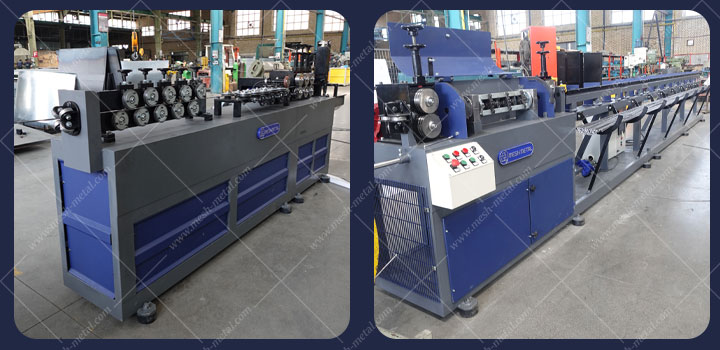Blog
Rolling vs. Rotor-Type Wire Straightening & Cutting Machines

Rolling vs. Rotor-Type Wire Straightening & Cutting Machines: Which One Fits Your Needs?
In the wire industry and mesh production, choosing the right machine for straightening and cutting wires has a direct impact on product quality, production speed, and overall costs. One of the most important decisions is whether to use a rolling-type wire straightening machine or a rotor-type model.
In this article, we will explore the key differences between the two so you can decide which one best fits your business.
1. Working Mechanism
Rotor-Type:
This machine straightens the wire through successive hammer-like impacts from the rotor. The repeated strikes eliminate bends, resulting in a straight wire.
Rolling-Type:
Here, the wire passes through a series of rollers. With uniform pressure and controlled rotation, the rollers gradually remove bends and curvature.
2. Speed
Rolling machines generally operate at higher speeds since straightening and rolling occur simultaneously. This improves efficiency and reduces production time. However, in Sepehr’s rolling machines, the speed is slightly reduced by using a servo motor to ensure more precise cutting.
On the other hand, Sepehr’s rotor-type machines deliver faster performance in wire diameters ranging from 4 to 7 mm compared to rolling models.
3. Accuracy
The rolling type is ideal when wire surface quality (free from scratches or marks) is critical. It performs with high accuracy on shorter lengths (up to 80 cm) and ensures minimal warping or distortion.
The rotor type, however, offers reliable length accuracy and straightening for longer wires (up to 6 meters) thanks to its special guiding design—though the surface finish may be slightly lower in quality.
4. Cost
Rolling machines are more expensive due to advanced technologies like servo motors and additional components. Still, the investment is well justified in projects where high precision is required.
Rotor-type machines are more cost-effective and a practical choice for workshops or construction-related applications.
5. Applications
-
Rolling type: Best suited for industries where precision and surface quality are crucial (such as stainless steel or coated wire), including shafts, precision industrial parts, decorative products, and kitchen equipment. Not recommended for wires under 4 mm in diameter.
-
Rotor type: Ideal for projects requiring longer lengths, higher speed, and lower costs, such as construction, metalworking workshops, and mass production.
6. Advantages at a Glance
| Feature | Rolling Type | Rotor Type |
|---|---|---|
| Accuracy | Very high on short lengths | Reliable on long lengths |
| Surface Quality | Excellent | Moderate |
| Price | Higher | More economical |
| Supported Length | Up to 80 cm | Up to 6 m |
| Best for | High-precision industrial projects | Construction & mass production |
| Ease of Use | Requires fine adjustments | Easier to operate |
